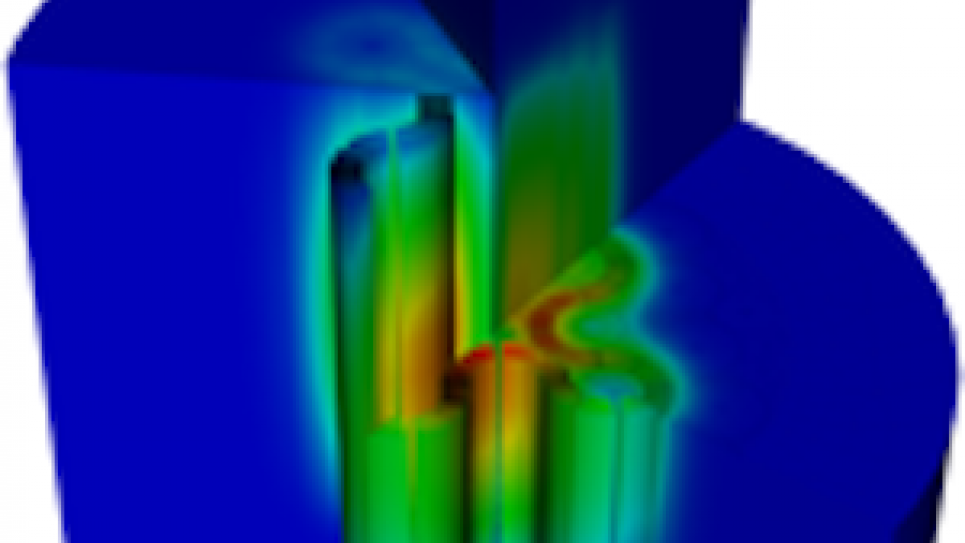
Validation Work for Heterogeneous Nuclear Reactor Calculations
Micheal Smith, Argonne National Laboratory, was awarded 30 million hours to conduct validation and verification of heterogeneous nuclear code reactor calculations that will improve the ability of nuclear reactor physics codes to solve real-world design problems.
The goal of the Simulation based High-efficiency Advanced Reactor Prototyping (SHARP) project at Argonne National Laboratory is to enhance the state-of-the-art nuclear reactor core modeling capabilities in the context of assessing their ability to better solve real-world design problems. The SHARP project is primarily supported by DOE’s Nuclear Energy Advanced Modeling and Simulation (NEAMS) program but has additional support from the Center for Exascale Simulation for Advanced Reactors (CESAR). The goal of NEAMS is to develop new tools that push the envelope of nuclear reactor analysis while CESAR is focused on co-designing the fundamental algorithms and super-computers such that simulation codes like SHARP can progress with technology. NEAMS has two foci: (1) the enhancement of newly developed high-fidelity simulation methods in preparation for design analysis, and (2) the application of the advanced methods to core problems for an accurate assessment of key system performance and safety characteristics in nuclear reactors.
Code development requires substantial verification and validation work before confidence in its use is justified. Up to now, the majority of the UNIC code validation work has been done using well-understood methodologies involving spatial homogenization. From this point forward, a more substantial number of verification and validation problems will be tackled. Efforts will focus on solving the Flattop and spherical problems Godiva and Jezebel and on addressing an outstanding request from Idaho National Laboratory to demonstrate the ability of the UNIC code to model the Advanced Test Reactor (ATR). From a science perspective, we will improve the existing simulation capability by:
- Continued development of the cross section generation technique for homogeneous, mixed homogeneous-heterogeneous, and fully heterogeneous geometry modeling in steady-state as well as kinetics/dynamics modeling of fast reactors.
- Initial validation of the heterogeneous modeling capability of UNIC on fast and thermal reactor problems using a wider set of benchmark problems.